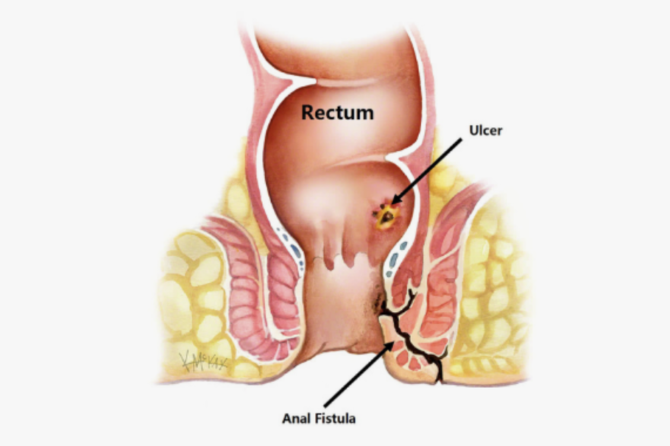
Can Anal Fistula Be Completely Cured?
Anal fistula is a health issue characterized by the formation of an abnormal channel around the anus. This condition typically develops after an anorectal abscess, where infected tissues progress towards the skin surface, forming an inflammatory tunnel. These tunnels can negatively affect the patient’s quality of life, causing symptoms such as pain, discharge, and foul odor. If untreated, the fistula may become more complicated, chronic, and lead to severe complications.
The treatment process varies depending on the degree and location of the anal fistula and the patient’s overall health condition. With early diagnosis and appropriate treatment methods, anal fistulas can be completely cured. However, there is always a risk of recurrence. Thus, regular follow-ups after treatment should not be neglected.
Can Anal Fistula Be Fully Healed?
Anal fistulas can be completely healed with proper surgical interventions. However, there is a risk of recurrence. During treatment, the type of fistula and the extent of the infection’s spread are taken into account. Surgical methods are generally highly effective, but in some cases, the fistula may recur. Therefore, postoperative care and medical check-ups are crucial.
One of the most commonly used surgical methods is fistulotomy. In this procedure, the fistula tract is opened, cleaned, and the infected tissues are allowed to heal. Additionally, minimally invasive methods such as laser treatment are also preferred. These methods are advantageous for patients as they are less painful and offer a faster recovery process.
What Causes Anal Fistula?
Anal fistula usually develops due to infections. Abscesses form as a result of blockage and inflammation of glands in the anal area. Over time, these abscesses progress towards the skin surface, forming a fistula tract. Common causes of fistula include:
- Chronic inflammatory bowel diseases (e.g., Crohn’s disease).
- Trauma or surgical procedures around the rectum.
- Weakness of the immune system.
- Poor hygiene and infections in the anal area.
How to Identify a Fistula?
Anal fistula typically presents with noticeable symptoms. The following signs may indicate the presence of an anal fistula:
- Pain and discomfort around the anus.
- Persistent or intermittent foul-smelling discharge.
- Swelling, redness, and irritation around the anus.
- Increased pain during bowel movements.
For diagnosis, doctors perform a physical examination and, if necessary, use imaging techniques (ultrasound or MRI).
How Does a Fistula Close?
Closing a fistula typically requires surgical intervention. In surgical methods like fistulotomy, the fistula tract is opened, cleaned, and the natural healing process is supported. In some cases, biological or synthetic materials are used to close the fistula tract, preventing the spread of infection and aiding tissue healing.
What Color Is Fistula Discharge?
Fistula discharge is typically yellow, green, or brown due to infection. The foul smell of the discharge indicates a bacterial infection. An increase in the amount or a change in the color of the discharge may signify the progression of the fistula, requiring urgent medical attention.
What Happens If a Fistula Bursts?
When a fistula bursts, intense pain and an increase in discharge are typically observed. This may relieve pressure in the infected tissues but also increases the risk of spreading the infection. After a fistula bursts, it is important for patients to consult a specialist to begin the treatment process. Untreated fistulas can lead to severe complications, such as sepsis.
Anal fistula is a health condition that can be completely treated through surgical interventions. However, to prevent recurrence, postoperative care and regular check-ups are essential. Early diagnosis and initiation of treatment upon noticing symptoms can prevent the disease’s progression and improve the patient’s quality of life. It is crucial not to neglect such conditions and consult a specialist doctor for a healthy life.
Leave a reply

Leave a reply